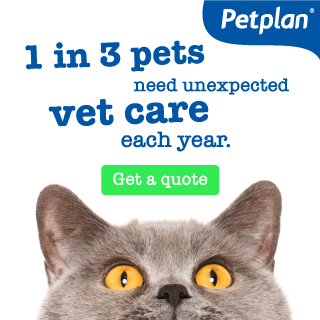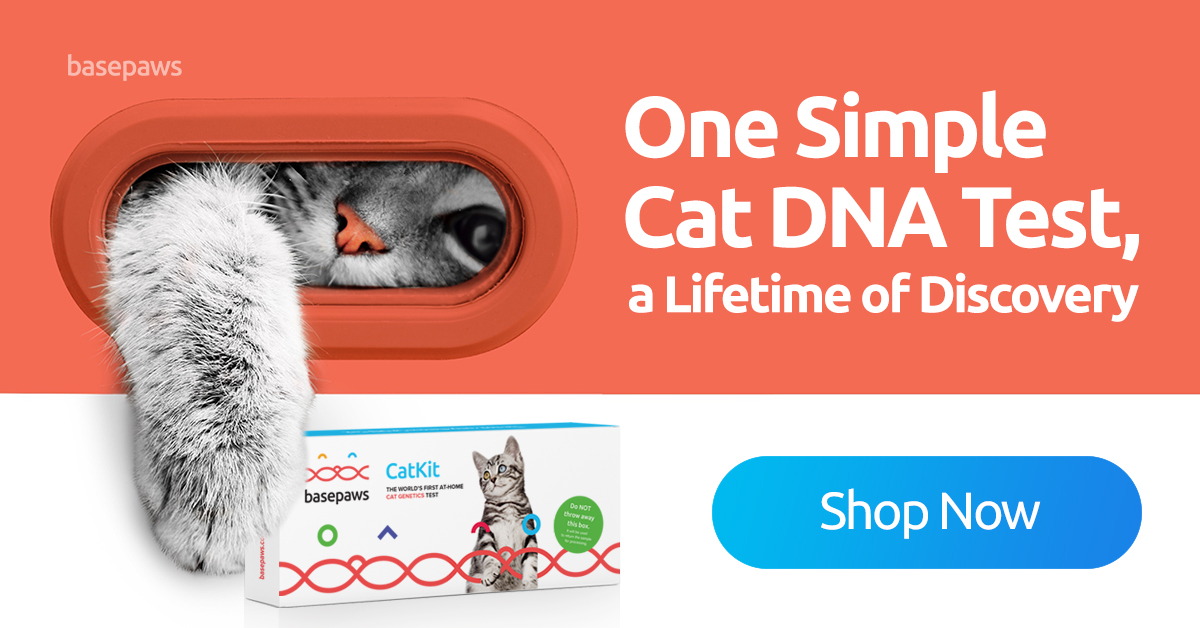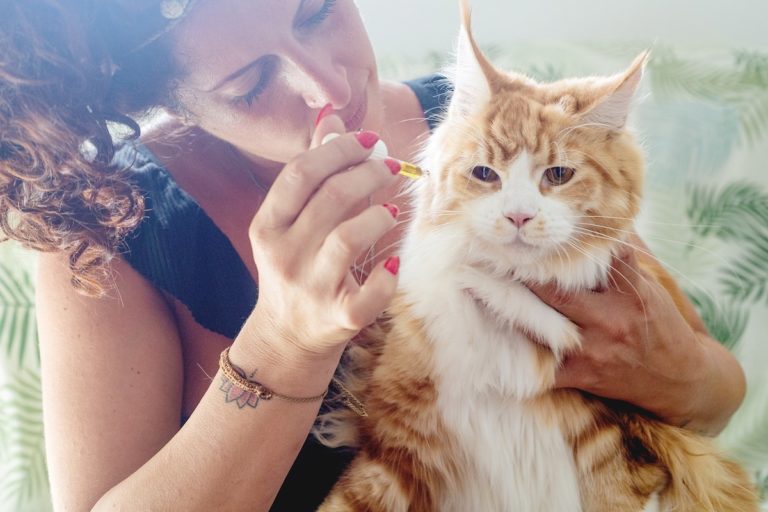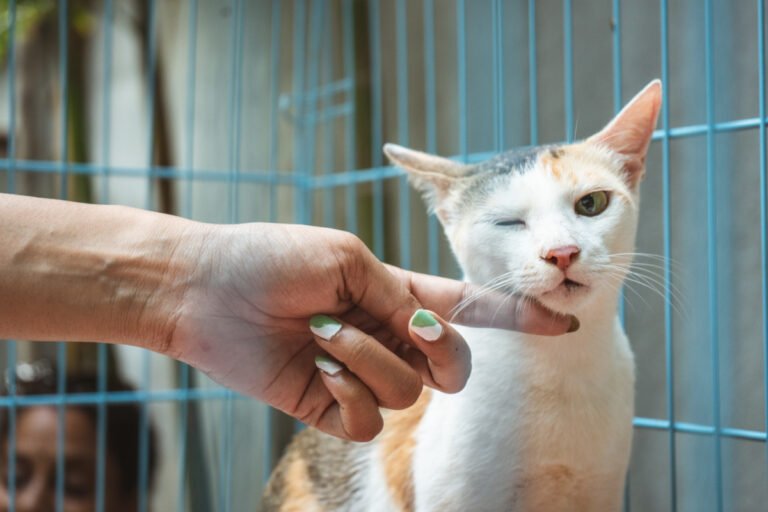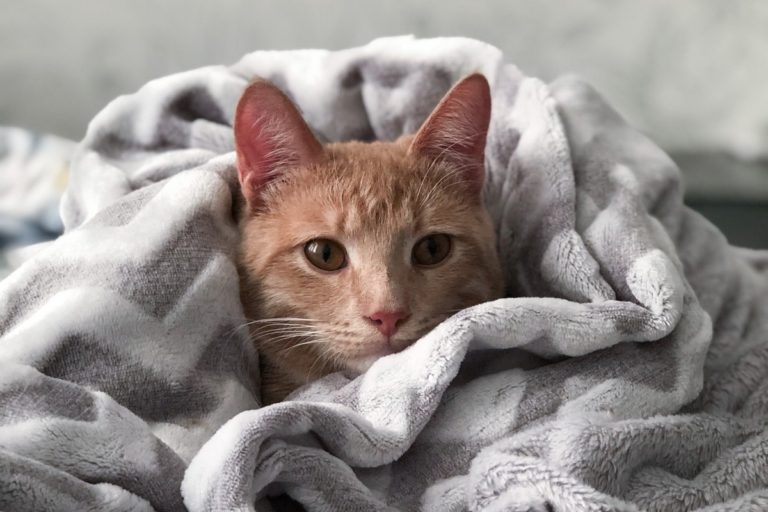As caring cat parents, we don’t want to think about anything bad happening to our little furballs. But, unfortunately, bad things can and do happen.
A scuffle with another animal, a poorly executed jump off of a piece of furniture, or even a debilitating illness… Any of this could be waiting in your cat’s future. Without insurance, you are only one incident away from a big pile of veterinary bills.
But is pet insurance worth it for indoor cats? It all depends on your cat, honestly. Read this guide to find out the different types of pet insurance for cats available in the US and how to calculate if it is really worth it for your indoor cat.
DISCLAIMER: This post may contain affiliate links. If you click one of these links and decide to make a purchase, we may receive a small commission. This comes at no extra cost to you and helps to keep the site alive and up to date. If you want more information, please review our Privacy Policy. Thank you for your support!
Should I Get Pet Insurance For My Cat?
Generally speaking, we are definitely in favor of pet insurance for cats. Of course, there are situations in which it will make less sense to get pet insurance for your cat, for instance when your cat is still very young and in good health. Nevertheless, our blue-eyed kittens grow up, and older cats are at a greater risk of getting sick. So, even if you don’t need pet insurance now, you should prepare yourself for the future and get informed about the different options of pet insurance for cats out there.
Related Post: Top 8 Most Common Illnesses In Older Cats
Get familiar with the top 8 most common illnesses in older cats, so you know what to prepare for and how likely your elderly cat is to fall ill.Pet Insurance Prolongs Your Cat’s Life
Cats nowadays are living longer lives than ever before. They eat better food and get better medical care, all of which helps them to stay fit and healthy longer. But as it does for us, old age can bring a lot of unexpected and devastating ailments for them, like arthritis, kidney disease and hyperthyroidism, just to name a few. Luckily, as our cats are pioneering feline seniority, scientists are constantly discovering new facts about cats and their biology, which lead to new breakthroughs in veterinary medicine.
New and innovative treatments are developed all the time, and your cat might be the cat that could really benefit from them. But it takes time for new methods to be widely adopted and become affordable for everyone. That is, unless you have pet insurance that will cover the costs for you. Having pet insurance allows you to seek out exactly those treatments that will best help your cat, instead of settling for the best treatment that you can currently afford.
On top of that, you will no longer need to take a “wait and see”-approach to your cat’s health. As soon as you see something out of the ordinary, you can take your cat to the vet for a checkup, knowing that it is covered by your insurance. Catching things early is key with a lot of feline illnesses and can often make the difference between your cat surviving or declining.
Related Post: Top 20 Feline Medical Emergencies: When To Take Your Cat To The Vet
We list the top 20 cat medical emergencies that require an immediate visit to the veterinary clinic. Read on to find out when to take your cat to the vet.Pet Insurance Reduces Financial Euthanization
It is a sad fact that pets get euthanized every day simply because their owners can’t afford to pay for their medical care. Whenever there is an economic recession, it is accompanied by a rise in pet euthanizations. Pet insurance directly helps to reduce financial euthanization by giving pet owners the means to save pets they would otherwise have to put down.
It might seem like a big sacrifice to spend an extra 50 or 100 dollars a month on your cat, and for some of us it definitely is. But think about what you’ll get in return. You will have the comfort of knowing that, no matter what happens, you will be able to give your cat the care they need to be healthy and stay alive longer. You are directly investing in your future with your cat and fulfilling your promise of caring for them. You get insurance for yourself, your kids, your house, your car… Why not for your cat?
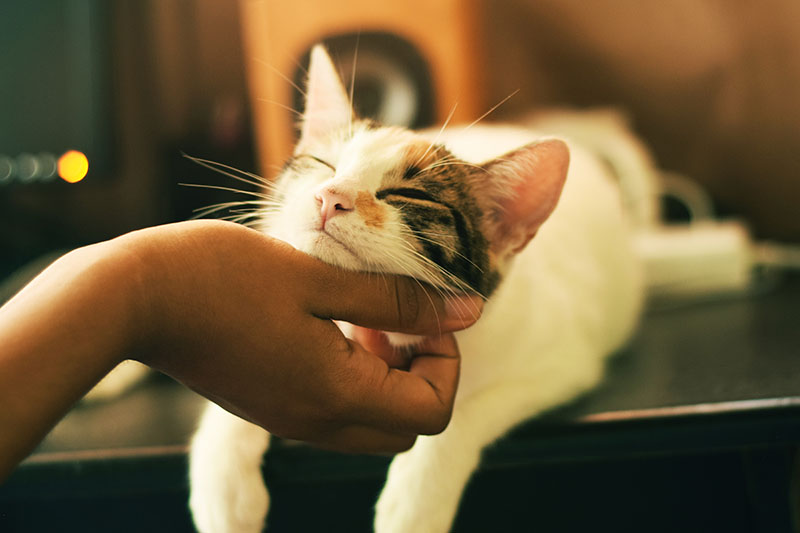
Types Of Pet Insurance For Cats
The first thing to note when you are thinking of getting pet insurance for cats is that there are different types of pet insurance. Generally speaking, you can choose between traditional insurance policies, community health plans and discount clubs. To explain the differences, let’s look at three popular options for pet insurance for cats available in the US.
Petplan
Petplan is a traditional insurance company for pets. They work pretty much the same as your own health insurance: you pay a monthly premium and, in return, they will cover most of your cat’s medical expenses. The only likely difference between Petplan and your own health insurance is that with Petplan you’ll have to pay your vet bills upfront, and then submit them to Petplan to get reimbursed.
Like most traditional insurance companies, Petplan does not cover pre-existing conditions and they charge higher premiums for higher risk clients. That means that your monthly fees will go up as your cat gets older. And, if your cat is already old, they might not even be accepted onto Petplan’s policy at all.
There is also a limit to the amount they will reimburse per year on each policy, though these limits are quite high and can be adjusted to your situation. Petplan offers a standard policy with basic coverage similar to other pet insurance companies. If you want extra coverage or better payout terms, you can extend your insurance policy to fit your particular needs.
Eusoh
Eusoh is not a traditional pet insurance company. In fact, they technically aren’t an insurance company at all. Eusoh is a community health plan for pets. When you sign up with Eusoh, you are joining a community of pet owners that collectively carry the health care burden of the whole group.
In practice, however, Eusoh still works much like traditional pet insurance. You go to the vet, pay your bill, and then submit it to the Eusoh community for reimbursement. Eusoh’s clever algorithm then splits the costs of your reimbursement among all community members, making sure everyone’s pet health care costs stay as low as they can be.
The beauty of Eusoh is that they accept pets of all ages and they don’t charge extra for older pets. If you’re looking for pet insurance for older cats, Eusoh is the way to go. Just keep in mind that, as with most pet insurance for cats, pre-existing conditions are not covered. So it’s best to get your cat insured with Eusoh before they fall critically ill.
Pet Assure
Another option worth considering when comparing pet insurance for indoor cats is Pet Assure. Although their name may suggest otherwise, Pet Assure is not a company that offers pet insurance policies. Instead, they give you a direct discount on all your vet bills for all examinations, treatments and in-house lab tests your cat might need. No upfront payments or reimbursements needed.
The only caveat of this amazing deal is that it goes through your employer. Your employer has to be signed up with Pet Assure for you to become a member and get that discount. Luckily, there are already over 6,000 US companies signed on with Pet Assure. You can check here to see if your employer is one of them, or invite them to join if they are not.
You’ll be wise to do so, because Pet Assure covers a lot of costs and treatments that pet insurance policies don’t, like preventative care and neutering. They also don’t have a waiting period after signing up like pet insurance policies do, so you can start saving money immediately after signing up.
And best of all, you can combine Pet Assure with pet insurance for cats! That is honestly the best way to ensure you pay as little for your cat’s health care as possible.
What Does Pet Insurance Cost?
There are different things you need to consider when figuring out how much pet insurance for cats will actually cost you versus the benefits you gain from having it. Of course, the exact costs will depend on what type of insurance you choose and the terms of the policy. Here, we will compare prices for Petplan, Eusoh and Pet Assure to give you an idea of what you can expect.
Pet Insurance For Cats Monthly Premium
The most obvious cost that comes with any pet insurance for cats solution is the monthly fee you have to pay to participate. These premiums can differ quite a bit from insurer to insurer, but they can also be affected by your pet’s age and their state of health.
All pet insurance policies require you to provide details on your cat’s current condition, any diseases they have already been diagnosed with and medications they are taking at the time of signing up. The insurance company will use this information to calculate your personal premium, specifically taking into account any risk factors associated with your cat.
You might be tempted to paint a rosy picture of your ailing cat’s health in an effort to get a lower premium, but you definitely should NOT do this. Lying on an insurance form is insurance fraud, which is a crime in all 50 US states. Some states even consider it a federal crime. Pet insurance is not worth going to jail for.
The monthly premiums for Petplan, Eusoh and Pet Assure are in the table below. As you can see, Petplan is the most expensive option, and gets even more expensive for older cats. Also note that Petplan’s prices are averages, meaning your premium could fall above or below this. Get a free quote from Petplan to receive an offer tailored to your cat.
Eusoh charges a low, flat fee of 17 USD for all its members. If you are not already signed up with them, now is the time to do so. For a limited time, they are offering a 4 dollar monthly discount on the first year of membership fees to all new community members. Use the coupon code LUCKY when you sign up to take advantage of this deal.
Pet Assure’s premium depends on your location and the terms negotiated with you and your employer, though they never exceed 10 USD per month.
| Petplan | Eusoh | Pet Assure | |
| Monthly Premium | 34 USD (avg) | 17 USD | 10 USD (max) |
| Monthly Premium (10yo) | 160 USD (avg) | 17 USD | 10 USD (max) |
Pet Care Contribution
Since Eusoh is a community health plan rather than pet insurance, they also charge a monthly pet care contribution on top of the monthly fee. Petplan and Pet Assure include all costs in their premium, so you won’t have to pay a pet care contribution if you are signed up with either of them.
The amount of the contribution you pay with Eusoh is directly dependent on the amount of health care costs your community members were reimbursed for the previous month. If no one makes a claim, no one has to pay a contribution. If someone does make a claim, the amount is divided among all community members.
But you never have to worry about unexpected, high contribution costs with Eusoh. They always divide the costs in such a way that ensures no one ever has to pay more than 48 USD pet care contribution in any given month. Combined with the membership fee, that comes to 65 USD a month, max! More often than not your monthly costs will be way below that.
| Petplan | Eusoh | Pet Assure | |
| Monthly Care Contribution | – | 48 USD (max) | – |
Pet Insurance For Cats Annual OOP
Another thing to consider when comparing pet insurance policies is their annual out of pocket (OOP). This is the amount you will have to cover yourself, before you can actually start making claims on your insurance.
For instance, say you spend 1000 USD on your pet’s health care in a year and your pet insurance has an annual OOP of 250 USD. That means you can claim 750 USD (1000 – 250) of your pet health care costs from your insurance that year.
Both Petplan and Eusoh have an annual OOP of 250 USD. Pet Assure, on the other hand, does not have an OOP. With Pet Assure, you can start saving money right away on the first vet bill after signing up.
| Petplan | Eusoh | Pet Assure | |
| Annual OOP | 250 USD | 250 USD | – |
Pet Insurance For Cats Maximum Payout
On top of the annual OOP, pet insurance policies generally include a limit on the amount they will pay out per year on each policy, but also per individual claim. The yearly maximum payout is usually quite high, in the thousands of dollars. This should be enough to cover the health care costs for most cats.
Eusoh has a maximum yearly payout of 8,500 USD per pet for all community members. Petplan offers multiple options. In their standard policy, you have a maximum yearly payout of 15,000 USD. However, you can choose to lower it to 5,000 USD per year in exchange for a lower premium. Or, if you need more, you can pay a higher premium and get unlimited coverage. Pet Assure does not have a maximum to their payouts. As long as you are a member with them, you can keep saving money on your veterinary costs.
When considering whether pet insurance is worth it for indoor cats, it is more important to look at the maximum payout per claim. The maximum payout per claim is expressed as a percentage of your total bill. The uncovered amount left on your bill after deduction of the maximum payout is known as the copay or copayment. This is the part you will have to pay out of pocket.
Both Eusoh and Petplan will reimburse you for 80% of your coverable medical expenses. This percentage is pretty standard when it comes to pet insurance for pets. Pet Assure gives you a discount of 25%, which may seem low in comparison. But when you consider that you get this discount on the spot without having to file a claim, ánd you can use it in addition to pet insurance for cats, you will see that it is definitely worth it. Even more so when you realize that Pet Assure actually covers a lot more expenses than most pet insurances do.
| Petplan | Eusoh | Pet Assure | |
| Maximum Yearly Payout | 15,000 USD | 8,500 USD | Unlimited |
| Maximum Payout Per Claim | 80% | 80% | 25% |
What Does Pet Insurance Cover For Cats?
Now that you know what you can expect to pay for pet insurance for cats, let’s take a look at the actual costs you can get reimbursed for with each plan.
| What Does Pet Insurance Cover? | Petplan | Eusoh | Pet Assure |
| Preventive Care | ‒ | ✔ | ✔ |
| Pre-Existing Conditions | ‒ | ‒ | ✔ |
| Genetic Conditions | ✔ | ✔ | ✔ |
| Veterinary Exams | ✔ | ✔ | ✔ |
| Vaccines | ‒ | ✔ | ✔ |
| Spaying/Neutering | ‒ | ‒ | ✔ |
| Microchipping | ‒ | ✔ | ✔ |
| Dental Care | ✔ | ‒ | ✔ |
| Lab Tests | ✔ | ✔ | ✔* |
| Medication | ✔ | ✔ | ‒ |
| Prescription Food | ‒ | ‒ | ‒ |
| Supplements | ‒ | ‒ | ‒ |
| Specialist Treatment | ✔ | ✔ | ✔** |
| Alternative Care | ✔ | ✔ | ✔ |
| Hospitalization | ✔ | ✔ | ✔ |
| Euthanasia/Cremation | ‒ | ✔ | ✔ |
** Limited to specialists that are part of the Pet Assure network.
Depending on the pet insurance for cats you choose, you might have the option to get extra coverage in exchange for a higher premium. Out of the three providers of pet insurance for cats that we reviewed, only Petplan offers the option of extending your policy with extra coverage options. This can be advantageous if you are taking care of multiple pets in need of medical care. Of course, you will have to pay more, but you will also be ready for anything with regards to your pets.
Is Pet Insurance Worth It For Indoor Cats?
If you are asking yourself “is pet insurance worth it for my indoor cat?”, use the following formula. The outcome will clearly tell you whether the policy you are considering is in your benefit, or if you are better off looking elsewhere.
First, you need to calculate the total amount you can reimburse from your pet insurance in a year: estimate how much your coverable medical expenses will be in a year (use the previous year as a guide), deduct your annual OOP from this amount, then multiply the remainder by the maximum payout percentage. The result of this calculation will be what you stand to gain from your insurance in a year.
GAIN = (yearly coverable costs – annual OOP) x maximum payout percentage
If this amount exceeds the maximum yearly payout on your policy, then the maximum yearly payout is all you stand to gain.
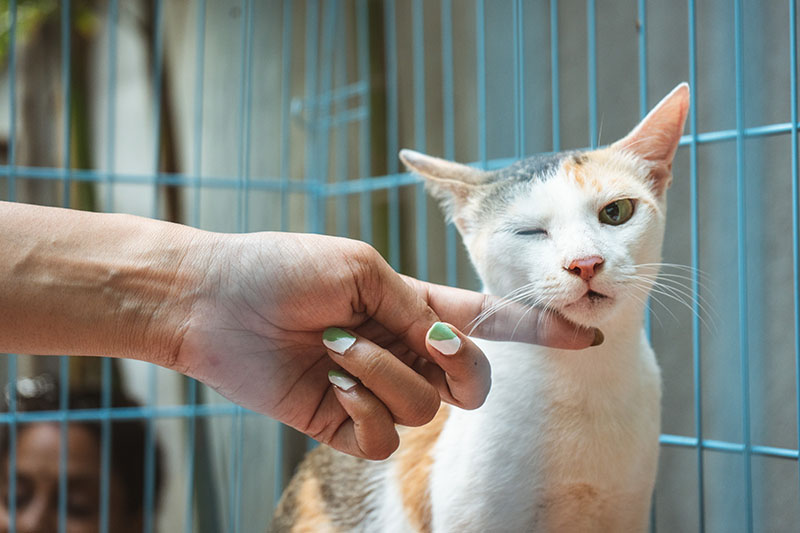
Next, you need to calculate what you will have to pay in order to receive these reimbursements in the first place. Start by adding up your monthly fees (premium plus possible care contribution) and multiplying them by 12. Add your annual OOP amount to this, as this is also something you’ll have to pay.
Then, take your yearly coverable costs, subtract the annual OOP from it, and multiply the remainder with the copay percentage. The copay percentage is the reverse of the maximum payout percentage: if your maximum payout is 80%, your copay is 20%. Add the outcome of this to the total costs you will have to pay.
Finally, you shouldn’t forget about your uncovered medical expenses. These will also have to come out of your pocket, so you need to add them to the total.
COST = 12 x monthly fees + annual OOP + copay percentage x (yearly coverable costs – annual OOP) + yearly uncovered costs
To calculate whether pet insurance is worth it for your cat, subtract the cost from the gain. If you end up with a positive number at the end of your calculations, it is definitely worth it to get your indoor cat pet insurance for cats. Especially if they are getting older, but are still in good health.
The older your cat gets, the more likely they are to contract a disease or ailment that leaves them in need of more expensive veterinary care, even if they spend their entire life indoors. Having the insurance in place means you are prepared for anything.
Is Pet Insurance Worth It For Kittens And Junior Cats?
If your cat is still very young and generally in good health, then you probably won’t need to worry about getting them insured just yet. Vaccinations generally aren’t covered by pet insurance, and that’s likely what the bulk of your veterinary expenses will consist of at this stage. However, if your employer is signed on with Pet Assure, that can definitely help you to keep costs as low as possible from day one.
Next to that, make sure that you feed your cat a healthy diet with lots of lean animal proteins, and have your vet look at them once or twice a year. This won’t be too costly, certainly less than the costs of a year’s worth of pet insurance.
However, if your vet signals anything that could possibly indicate something serious down the line, it is time to start orienting yourself regarding the different options of pet insurance for cats. As we noted, pre-existing conditions aren’t covered by pet insurance for cats. You want to make sure that you get your cat on an insurance plan before they actually need it, so that you can take full benefit of its coverage.
Is Pet Insurance Worth It For Older Cats?
Older cats are sadly at a disadvantage when it comes to pet insurance for cats. Most pet insurers charge higher premiums for older cats, if they even allow older pets on their policy in the first place. Elderly cats above 10 are especially hard to insure, since many of them come with pre-existing conditions, which generally aren’t covered.
If you have an elderly cat in fairly good health, but no pet insurance, your best bet is to find a community health plan like Eusoh. And, again, Pet Assure can help you to get that extra discount, no matter how old your cat is.
Another thing you can do now to help your cat in the future is to get their DNA profiled. Basepaws is a company that offers DNA tests especially for cats that allow you to check if your cat carries any markers for known feline illnesses that might put them at risk for disease later in life.
Basepaws Cat DNA Test will set you back 129 USD, but it comes included with lifetime updates. Whenever Basepaws updates their test to include new disease markers, they will rescreen your cat’s DNA and inform you of the results. If you want to go the extra mile, you can even have your cat’s whole genome sequenced for 499 USD.
Basepaws also offers a Dental Health Test for cats that screens for microbial signatures of common dental diseases in cats, including periodontal disease and tooth resorption. Dental disease is very common among cats. If left untreated, it can lead to complications and high veterinary costs. You can save yourself and your cat a lot of trouble by having Basepaws check their dental health for just 79 USD.



